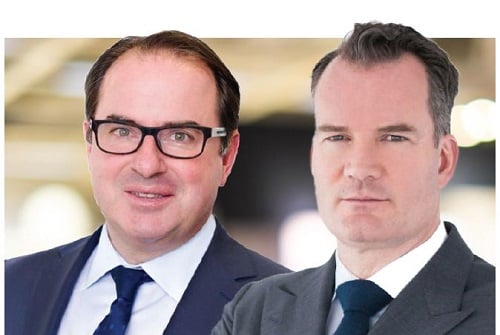

Navacord’s CEO, Shawn DeSantis, and executive chairman, T. Marshall Sadd, share how brokers can survive in a competitive market.
IBC: What does the current landscape look like for Canadian insurance brokers?
Shawn DeSantis: Today, brokers are thinking about the future from a technology point of view. They are thinking about how to build talent, and they are making choices around whether they want to face that road alone or if they want to partner with someone.
The distribution channels in Canada continue to change, and many brokers are thinking about who can help them take their business to the next level, which is why we created Navacord four years ago.
IBC: What is Navacord’s approach to partnering with brokerages?
T. Marshall Sadd: When Navacord came together, the options for brokers at the time were to sell to an insurance company or sell to a US-based multinational brokerage, ending the story of the broker entrepreneur. In 2013, Shawn and I had a conversation about creating an option to continue that journey for the entrepreneurial broker who is passionate about the success of their clients. We knew that we needed to be bigger and have scale with insurance companies, and today, Navacord partners with brokers through an equity partnership with a majority interest in the business.
IBC: What are the major challenges facing brokers?
SD: One of the trends that we’ve seen is the digitalization and commoditization of personal insurance. We are seeing this war on distribution happening in personal insurance, where there are direct writers competing with brokers and carriers are buying out brokerages.
IBC: How can brokers compete in that sort of environment?
SD: If you look at what’s happening in the Canadian marketplace, we are seeing brokers making the choice to play on the transactional side of the business – the commodity side – which is all about speed, scale and how to get business done with the least amount of human touch. Then there’s the other side of the business built on expert advisors and outsourced risk management.
We have been very thoughtful about moving away from the noise that exists in the transactional side of insurance and focusing on areas where we think the client continues to need expert advice from a broker. As the world continues to become more complex, individuals and businesses are going to need more knowledge and expertise with risk transfer and would prefer to work with someone who is specialized in his or her area versus a generalist.
IBC: What specialty areas have you seen growth in?
SD: We are one of the largest construction brokers in Canada working with mid-market construction clients, and now larger clients and projects with the addition of broker partner Wylie-Crump.
What’s happening is that governments across Canada, particularly in Ontario, are focusing on infrastructure spend. Construction has been a big growth area for our business in the past couple of years, and if you look at government investments and budgets over the next 10 years, we believe that sector will continue to be a strong contributor to growth.
TMS: Canada is very resourced-based, and in Alberta and out West, the energy sector is a big focus. In 2015, we saw that sector slow down, but we are now seeing a 50% increase in growth in that sector, everywhere from the pipeline and the oil sands to exploration and production.
IBC: What else can brokers do to survive and thrive in such a competitive climate?
TMS: We’re seeing a trend around talent development. The brokers who will survive going forward will be those who have full-time internal recruiters and trainers who are dedicated to educating and developing talent focused on delivering the best client experience possible.
We don’t see a lot of smaller brokers moving into the growing mid-market commercial space because they are being purchased by insurance companies. In order to survive in that mid-market space and bring expert advice, you need to develop people who are thinking about how best to work with clients in a rapidly changing world.
